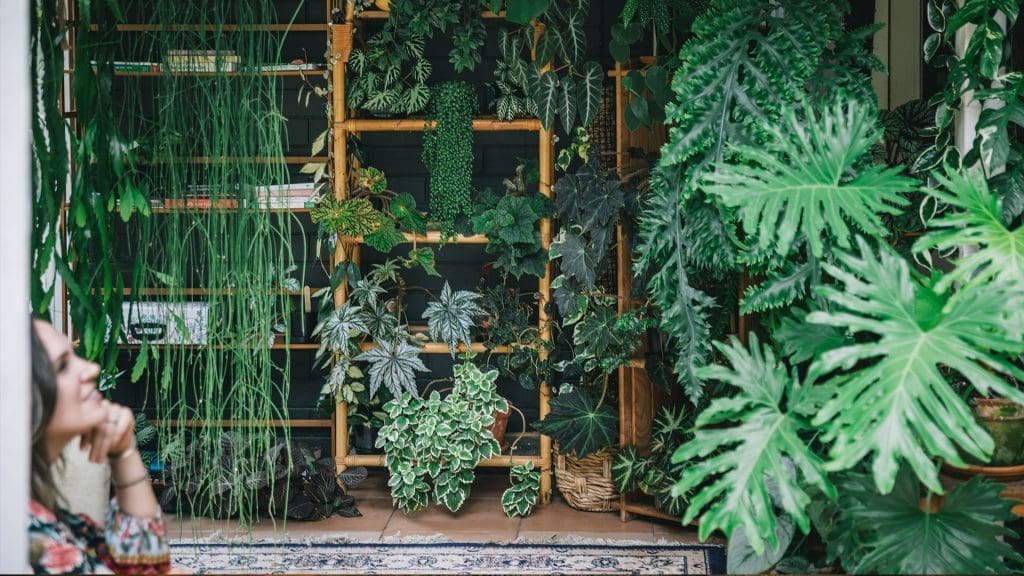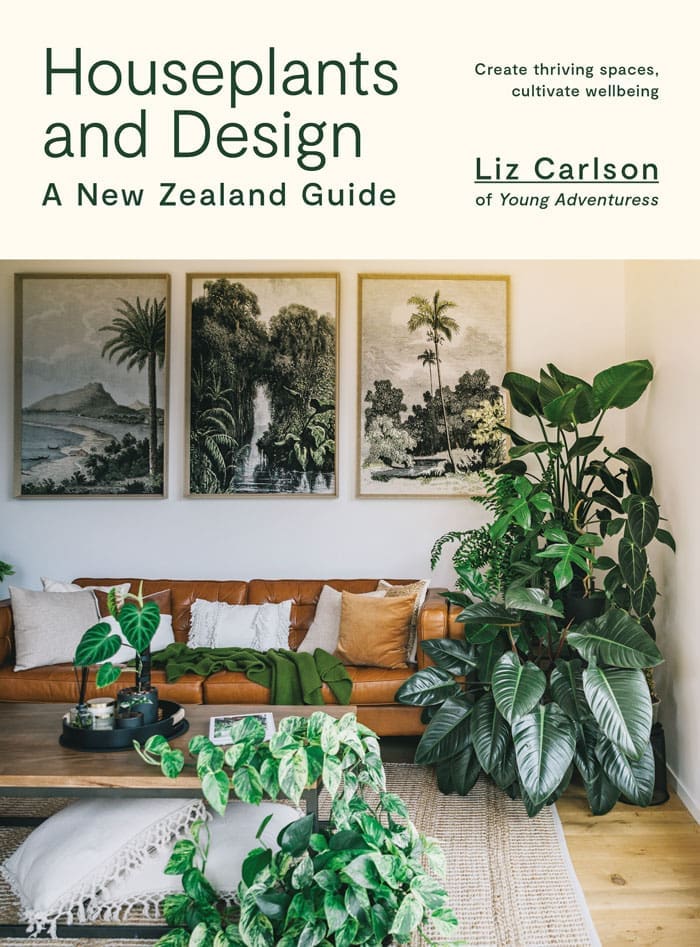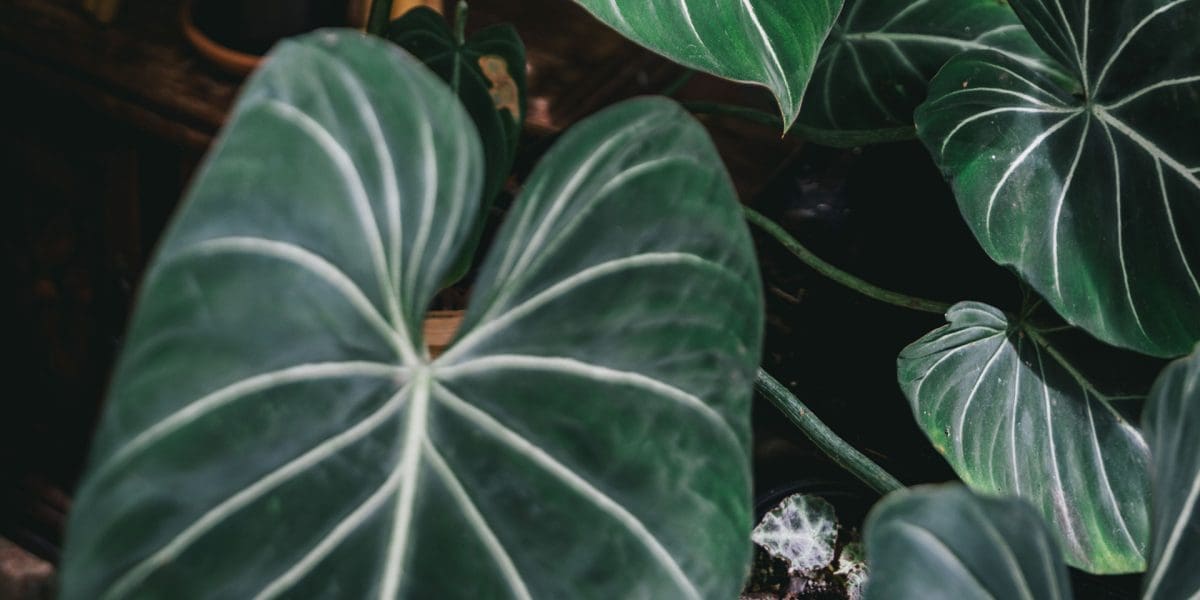Nuturing Nature
Those who are fans of interior design will have noticed the houseplant boom of recent years. Filling our social feeds with images of carefully styled lush green apartments and homes, the ever-stylish interior design influencers of Instagram have left us rushing to the plant stores each weekend, eager to recreate the jungle-like aesthetics.
And while it’s easy to add a fiddle leaf fig to the corner of your lounge, how do us novice green thumbs ensure our new plants will thrive in our home? And why is it so hard to get advice for Kiwis looking to find plants for New Zealand conditions?
Travel blogger and founder of Lyttleton’s NODE plant store, Liz Carlson is a houseplant enthusiast who has a penchant for collecting the beautiful and rare. A lover of all things nature, Liz’s extensive knowledge of the subject mostly came from trial and error, sacrificing a few plants on her journey to become a gardening guru. A big proponent for the endless benefits and joy houseplants can bring to the people around them, Liz wanted to create a guide for Kiwi houseplant lovers after finding it difficult to source NZ-focused plant books when looking to research for her growing houseplant collection.
Liz’s new book, Houseplants and Design: A New Zealand Guide takes readers through a comprehensive catalogue of houseplants available locally, offering advice on care and placement, as well as how to troubleshoot any issues you may encounter. From the rare to the uber popular varieties, Houseplants and Design shows greenspace lovers how to style their plants and create a space that’s both calming and thriving.
M2woman caught up with Liz on the eve of her debut book release to talk about her love of houseplants and nature, how she went about researching this extensive topic for the book and her top tips for looking after houseplants in your own home.

When did you first discover your love for houseplants?
I first fell in love with houseplants years ago when I was at the peak of my travel career. I spent so much time on the road that I craved doing something with my hands offline when I was home in Wanaka. I bought a plant on a whim one day, and it was all downhill from there.
What do you think it is about being surrounded by nature that humans love so much?
I think we all have a deep connection to the natural world in ways that are hard to articulate. There’s such a feeling of euphoria when walking in an ancient forest, climbing a mountain, or even sitting by the seaside. I think nature evokes a sense of nostalgia within all of us, perhaps for an easier, simpler time.
What do you think has been behind the houseplant boom of recent years?
I think we live in a busy, chaotic world where we’re constantly inundated with pings and notifications online. Our lives are increasingly spent online, and I believe to counterbalance that, people look towards things they can do with their hands.
There’s been a resurgence in not just houseplants but many other crafts, like gardening, pottery, and art. Being forced to stay at home for months on end sparked homegrown hobbies that offer simple returns when it comes to feeling good.
I’ve also noticed, as humans, we have an inherent desire to collect things. I’m not sure why, but there is something when it comes to collecting houseplants that is addictive.
What was your biggest lesson you learnt when you first started collecting houseplants?
When you feel like watering, don’t. The biggest mistake all plant parents make is overwatering. Learning to read the plant and realise when it’s time to water is a skill that comes with practice and a handful of plant deaths.
What were the biggest surprises?
If I search my mind way back to when I purchased my first unrooted plant cutting, a Swiss cheese vine that came in the post and popped it in water, I can still remember the joy I felt the first time I saw roots begin to grow. It was almost like a childhood science experiment. I’ve since grown thousands of plants, but I can still remember the simple joy that came with that very first one.
You seem to have really comprehensive knowledge on how to look after various houseplants. Was this knowledge all gained through trial and error? Or did you do a lot of research before diving in?
Everything I know about houseplants began with trial and error, which probably explains why so many plants died on my watch. I’m a visual learner, and I didn’t really interact a lot in the houseplant communities in New Zealand when I started collecting.

It was only when I started to become interested in collecting rare plants that I really began to research. After all, those would be expensive mistakes. When I opened my houseplant shop, NODE in Lyttelton two years ago, my knowledge grew even more.
Other than aesthetics, what benefits can cultivating houseplants have?
Growing houseplants has endless benefits for us, most of which have scientific backing. There is a lot of research around how we heal faster, work harder, and are less stressed when we are around greenery, and I mean living greenery – there’s even research that shows that fake plants do not offer the same benefits.
And you don’t need to be a scientist to see the mental health benefits of indoor gardening. Looking after something in many ways helps us look after ourselves.
What inspired you to write Houseplants and Design: A New Zealand Guide?
I was tired of seeing houseplant books here from overseas. New Zealand has a rich and diverse culture around houseplants that is unique from the rest of the world, even Australia. Our climates are different, and even our houseplants here are different (thanks to our stringent biosecurity laws).
And so much of the information in houseplant books is dated, repetitive, and inaccurate. Where was the book I wanted to read? Since no one else had written it, I decided to.
Your book contains in depth descriptions and notes on a huge amount of houseplants available in NZ. How did you go about researching such a wide variety of species?
Since owning a houseplant shop for years, and my passion for houseplants, I was already familiar with most plants marketed as houseplants in New Zealand before I began writing. But to create a guide meant I needed to fact-check and do a lot of research to ensure I was sharing the most up-to-date and accurate information. It took a lot of time.
I’ve read almost every book printed in English about houseplants since the 1970s and then began cross-checking with scientific papers, comparing online collective botanical catalogs, and plant patents globally online, corresponding with scientists, nurseries and private botanical collectors all over the world. There’s so much new information around the genetics of the plants we know as houseplants, with many being reclassified as we speak.
Do you have a favourite houseplant? Why is it your favourite?
I have many favourites; it’s hard to choose. My favourite succulents are lithops, colorful little plants that look like stones native to South Africa and Namibia; when kids come to my shop NODE, they think they look like little bums.
My favourite rare plant is probably the Philodendron gloriosum, a creeping terrestrial philodendron native to the Colombian rainforest that produces the most beautiful large leaves with silvery white veins. She’s showy and beautiful.
Liz’s top tips for looking after houseplants
1. You have to place houseplants around the home where they have the best conditions, not where you want them to go.
2. Water a lot less than you think you need to – most people kill plants by overwatering. Cut it down by half in wintertime.
3. Don’t place houseplants near drafts, heat pumps or by the fire. Most of our houseplants need humidity.
4. Never put a cactus in a bathroom.
5. Most of our leafy green tropical houseplants can’t tolerate direct, bright sunlight.
 Houseplants and Design: A New Zealand Guide. RRP $45. Out 1 November.
Houseplants and Design: A New Zealand Guide. RRP $45. Out 1 November.
Published by Allen & Unwin NZ.
Text and images by Liz Carlson.
